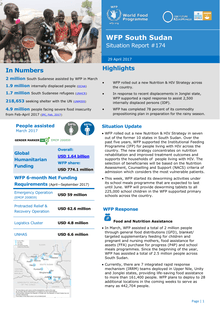Current Situation in South Sudan: Challenges and Opportunities

Introduction
South Sudan, the world’s youngest nation, has been struggling with a protracted conflict since its independence from Sudan in 2011. The ongoing humanitarian crisis and political instability have led to significant challenges for its citizens. Understanding the current events in South Sudan is crucial, as it helps highlight the urgent need for sustained international attention and support.
The Humanitarian Crisis
As of 2023, an estimated 9.4 million people in South Sudan — more than three-quarters of the population — require humanitarian assistance. This alarming figure arises from a combination of factors including civil conflict, economic turmoil, and climate-related disasters. The recent flooding, which has ravaged many areas, compounds the existing crisis, displacing thousands and destroying vital infrastructure.
A report by the United Nations Office for the Coordination of Humanitarian Affairs (OCHA) indicates that 1.9 million people are facing severe food insecurity, while severe malnutrition rates have reached concerning levels, especially among children. Access for aid agencies remains limited due to ongoing violence and logistics challenges, making direct interventions increasingly difficult.
Political Landscape and Peace Efforts
The political landscape in South Sudan remains complex and fragile. Following the signing of the Revitalized Agreement on the Resolution of the Conflict in South Sudan in 2018, there were initial hopes for a peace process. However, the implementation has faced numerous setbacks. Tensions between powerful factions continue, leading to sporadic violence, undermining stability, and hindering nation-building efforts.
The transitional government, formed to unify various factions, is still struggling to establish order. The international community, through organizations such as the African Union and the United Nations, continues to call for renewed commitment to the peace process. Recent forums have emphasized the need for a comprehensive approach that includes grassroots peace-building efforts alongside high-level political negotiations.
Conclusion
While South Sudan faces deep-rooted issues, including a humanitarian crisis and a challenging political environment, there are also glimmers of hope. Local communities are beginning to engage in reconciliation efforts, and international support remains critical. As the country navigates these turbulent waters, sustained globalization efforts, donor engagement, and local governance initiatives will be essential in fostering peace and stability. For readers, staying informed about South Sudan’s progress and challenges not only highlights the resilience of its people but also underscores the global responsibility to advocate for peace and support humanitarian efforts.


